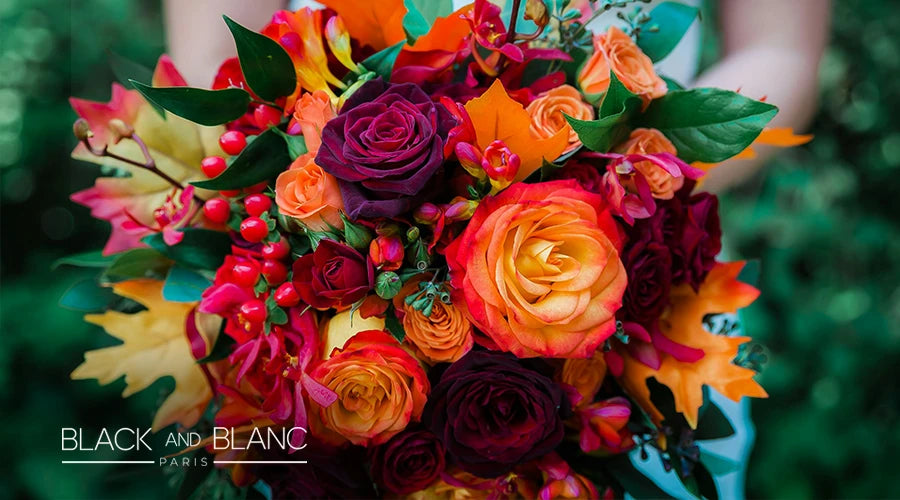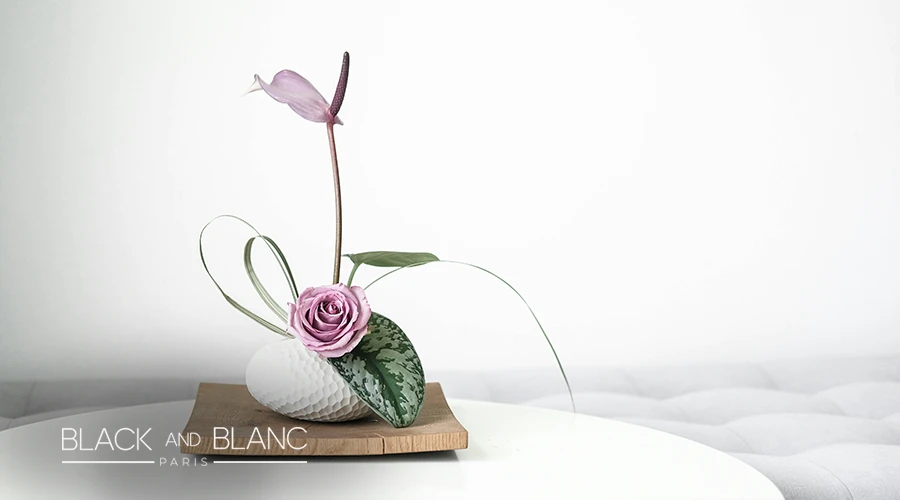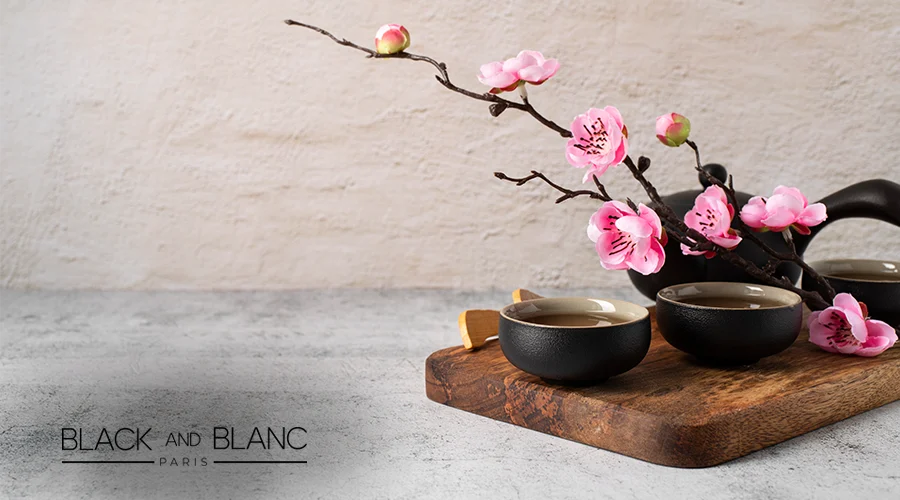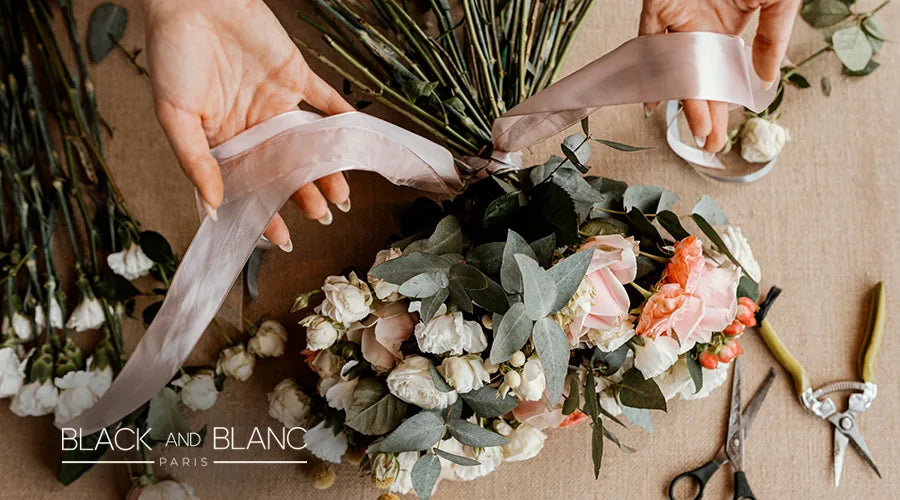Understanding The Aesthetics: Western Vs. Eastern Flower Arrangement Styles
Flower arranging is an art form that has developed in diverse styles across cultures. From extravagant Western to Eastern minimalist displays, the choice of materials, shapes, and meanings behind different schools of floral design offer insight into the worldviews and values of the societies from which they emerged.
In this article, we'll compare the signature qualities of Western and Eastern floral styles and what they symbolize.
Western Flower Arrangement: Abundance And Symmetry
Western flower arrangement, which originated and evolved along the cultural trajectory of Europe, is characterized by several signature qualities:
Massive arrangements
Western styles often focus on creating a 'full' look with abundant blooms densely packed together. The goal is to display as much floral variety, color, and volume as possible within the design.
Symmetry in Western Flower Arrangement
The arrangements are generally balanced and symmetrical, with materials distributed equivalently on both sides of a central axis. Common shapes include triangles, inverted T's, fans, hemispheres, and ovals.

-
Western Flower Arrangement Color Palette
Western styles use a broad spectrum of colors, sometimes even multiple hues within a single arrangement. Contrast is welcomed.
Western Flower Arrangement Popular Flowers
Some blossoms that frequently appear in Western-style displays include:
Western Flower Arrangement Meaning
The emphasis on abundance, vibrancy, and symmetrical balance often represents a celebration of beauty, joy, and life - making these bold arrangements popular for occasions like weddings, birthdays, anniversaries, and holidays.
The full, rounded shapes mirror facets of the natural world, like flower meadows and summer gardens at their peak. Packed with various textures and tones, they create an eye-catching floral feast for the senses.
Eastern Flower Arrangement: Simplicity And Harmony
In contrast to Western approach, Eastern styles of flower arrangement, notably Japanese ikebana, are guided by a very different set of principles and priorities:
Minimalism
Eastern arrangements often incorporate fewer blooms and emphasize open spaces between

In terms of flower arrangement style, Japanese is one of the main branches of the Eastern style, so let's compare it to the Western style.
As you can see, Western and Eastern approaches to flower arranging differ quite a bit on visual impact, how materials are handled, spiritual foundations, and social significance, where Western arrangements are flashy, densely packed statements designed to dazzle the eye, ikebana flower arrangements tend to be more simple, symbolic expressions crafted to awaken sensibility.
Some other contrasts:
Western Vs. Japanese Flower Arrangement: Perspective
Western styles use flowers as decorative ornamentation, with the arrangement as the primary focus. Emphasis is on the overall visual effect and beauty.
In ikebana philosophy, flowers are revered as living entities to be showcased. The fundamental goal is to highlight the unique essence of the materials themselves.
Western Vs. Japanese Flower Arrangement: Process

Constructing Western displays prioritizes technical skills in shaping, supporting, and balancing a robust mass of materials. The florist's input is imposed onto the raw materials.
Ikebana is more about carefully selecting blooms, leaves, and stems based on lines and suggesting their inner characters. The arranger follows cues from the plants instead of forcing an external vision.
Western Vs. Japanese Flower Arrangement: Role Of Flowers
The West sees flowers as compositional elements to create a vibrant still life. Color, variety, volume, and other formal qualities take precedence.
The East conceptualizes flowers as subject matter, speaking in a human language. The artist translates this voice by bringing out its authentic expression.
Western Vs. Japanese Flower Arrangement: Cultural Meaning
Western floral arts demonstrate luxury, status, and indulgence in sensual pleasures - values encouraged in those societies. Technique equals mastery to be admired.
Eastern arts encourage self-cultivation, creative intuition, and spiritual connection associated with Buddhism/Shintoism. Expressive sensitivity is more valued than technical skill alone.
The New East-West Development

With globalization accelerating cultural diffusion, Western and Eastern schools of floral design influence each other more than ever through artistic exchange, events, education, and media. We see old divisions blurred in contemporary works that strategically blend opposites.
Here are some examples of East-West crossover today include:
Western Approach To Eastern Mindfulness
Many avant-garde Western florists are adopting a more "listening to the materials" mindset associated with ikebana instead of forcing their vision. The results are stunning hybrid styles, allying technical prowess with responsive minimalism.
Eastern Asymmetry Meets Western Geometry.
Conversely, some Ikebana practitioners are introducing very structured geometric elements usually missing from more accessible compositions, weaving the spontaneity of nature with grounded stability.
East Asian Materials In Western Design
Western designers incorporate iconic Asian botanicals like orchids, lotus pods, and chrysanthemums into mixed floral palettes once dominated by European roses and calla lilies. This marries lushness with elegant simplicity.
Western Looks With Eastern Restraint
The rising art of botanical styling relies on ikebana-esque principles of negative space and simple vignettes to highlight plants, fruit branches, and foraged materials as sculptural elements.
Bringing these wide-ranging perspectives together, the recent East-West cross-developments showcase the universal values and creative diversity blossoming within the worldwide community of floral arts.
Final Thoughts
As we've explored, Eastern and Western floral art schools reveal distinguishing worldviews - from showy extravagance to contemplative minimalism, symmetrical uniformity, and asymmetrical spontaneity. Beyond superficial readings, the contrasts speak to more profound philosophical divergences about nature, beauty, reverence, and spirituality.
Yet despite differences, flower arranging across civilizations shares commonalities—exceptional skill, creativity, symbolic richness, and sensory delight.
Florists can expand their design vocabulary by learning from assorted traditions to craft unique contemporary works fusing cultures and ideas.
Understanding Eastern and Western perspectives allows Black and Blanc Fleur to produce tailor-made, one-of-a-kind arrangements for sophisticated Dubai customers.
Frequently Asked Questions
What Are The Key Differences Between Western And Eastern Flower Arrangements?
Some primary differences are visual symmetry vs. asymmetry, dense abundant materials vs. minimalist emptiness, multi-colored variety vs. subdued mono-chromatic palettes, decorative ornamentation vs. meditative subject matter, and technical prowess vs. intuitive sensitivity.
Why Does The Western Style Focus On Symmetry, Abundance, And Color Variety?
The Western aesthetic values order, extravagance, indulgence, and celebrations of beauty/fertility, reflecting Greco-Roman pagan roots and later Christian outlooks.
Why Does The Eastern Style Favor Asymmetry, Simplicity, And Restraint?
Spare Eastern styles embody spiritual philosophies like Buddhism and Shintoism that prize harmony with nature, imperfection, fleeting beauty, and self-cultivation over material displays.
How Are Contemporary Florists Blending Eastern/Western Elements Today?
Innovative florists strategically and sensitively bridge prior divides - applying technical skill to minimalist ikebana forms, using iconic Asian materials in Western lush arrangements, mixing abundance with negative space, etc.






